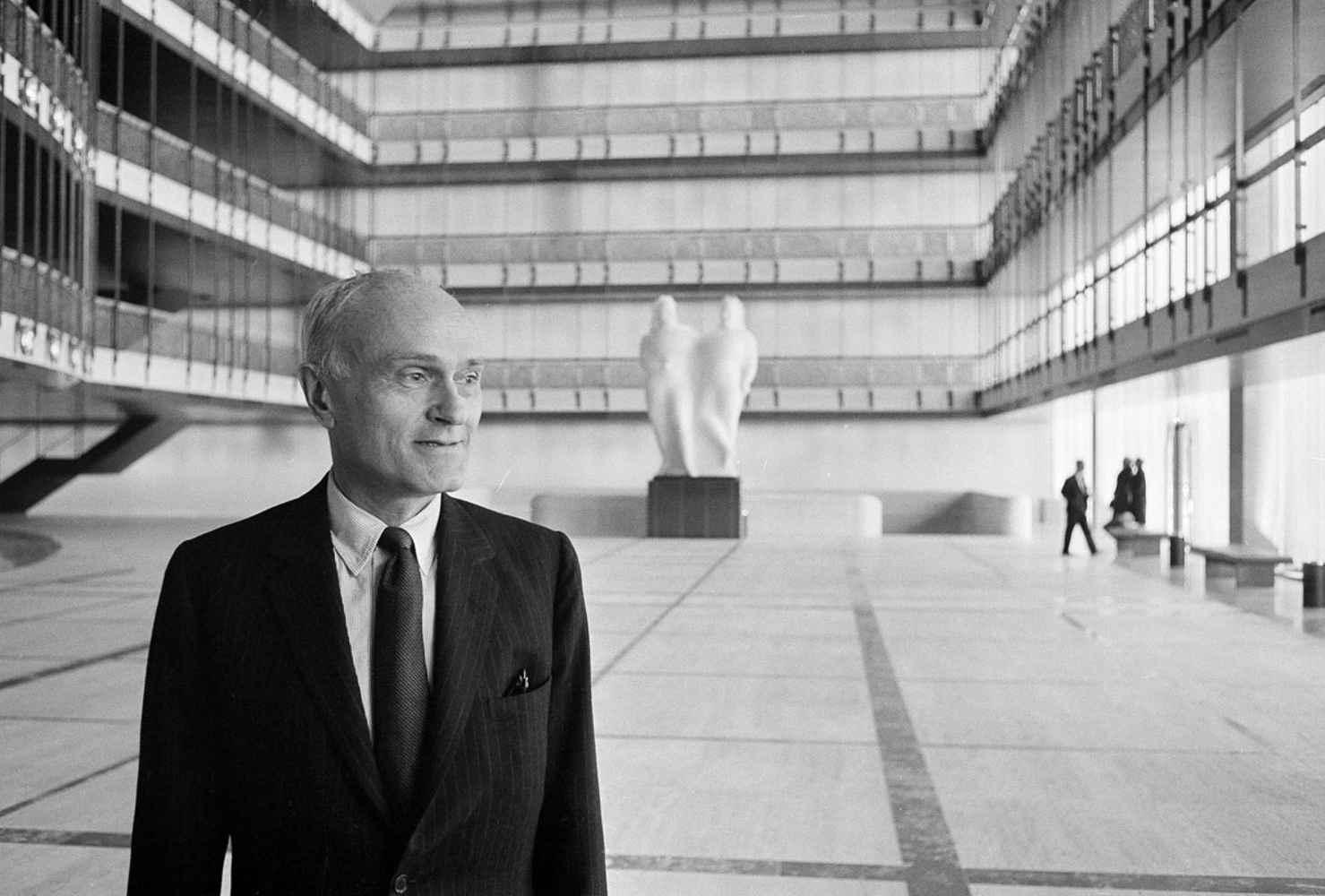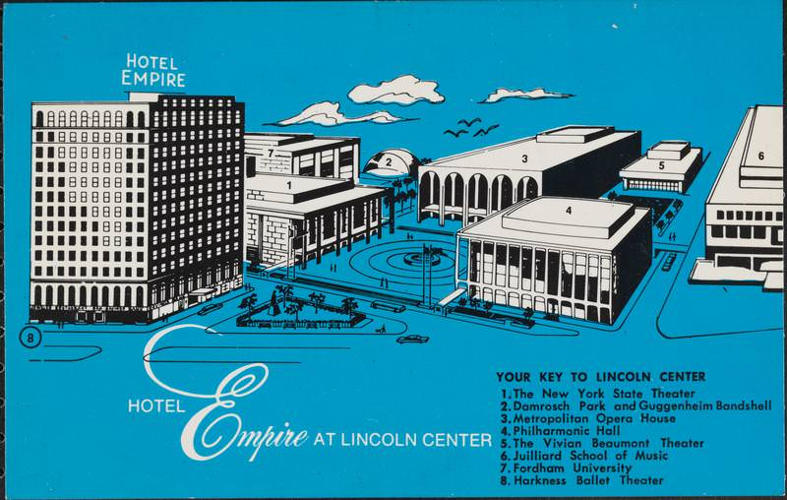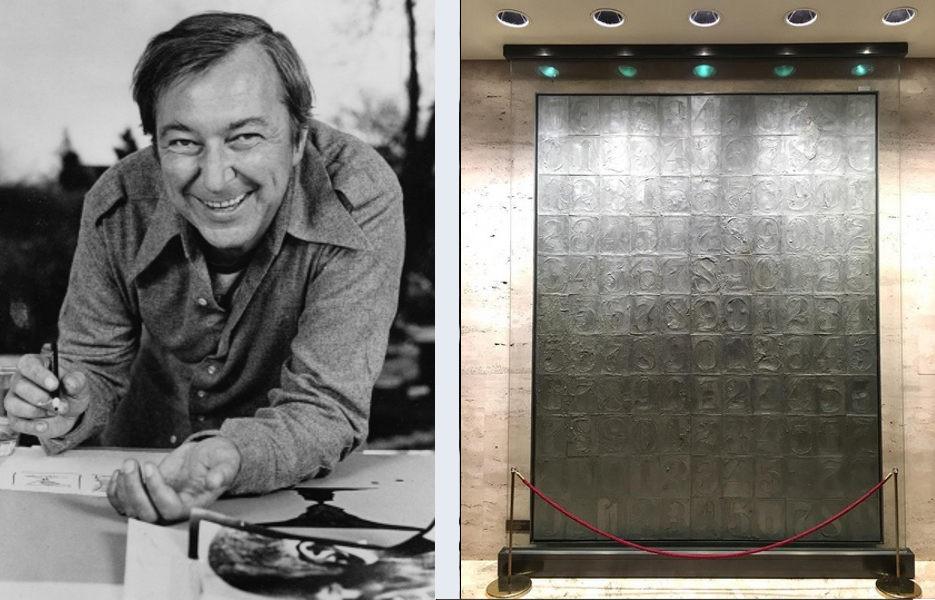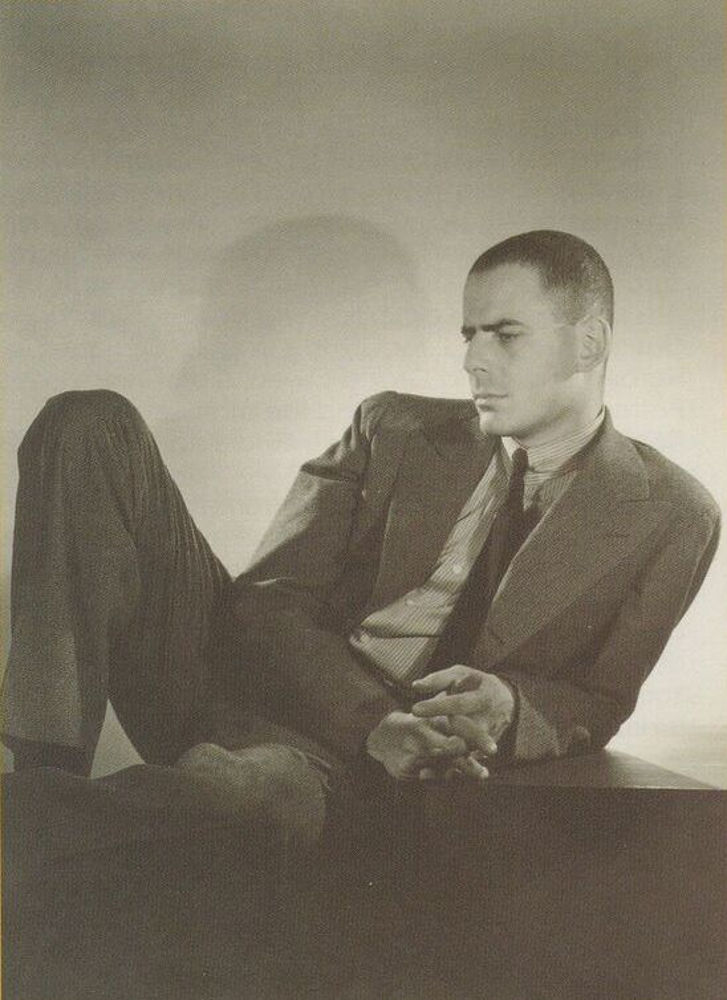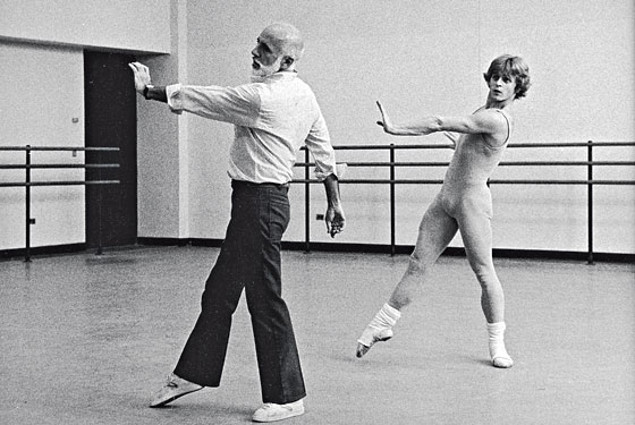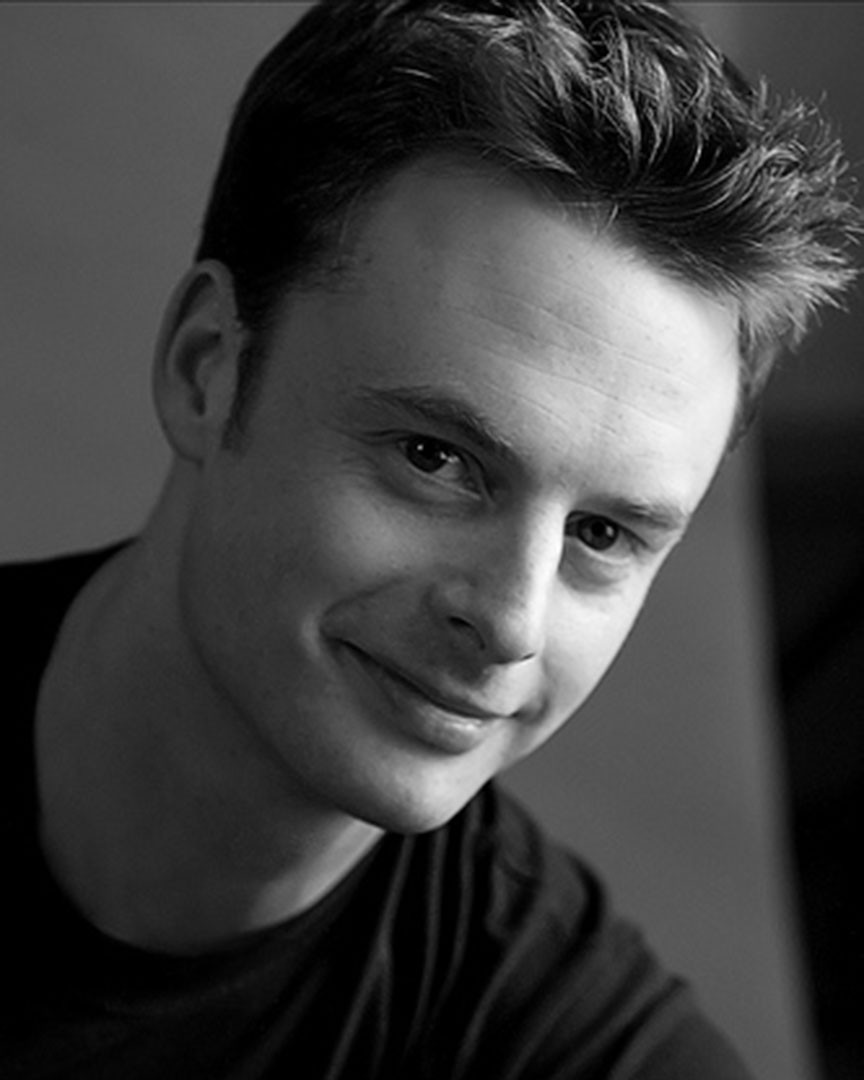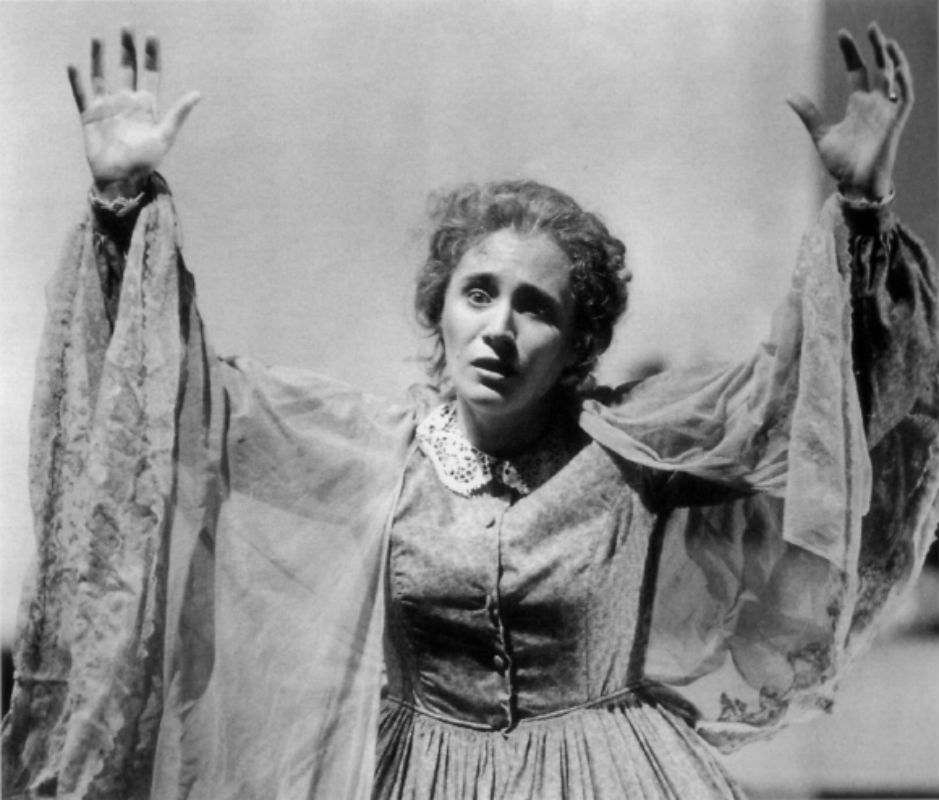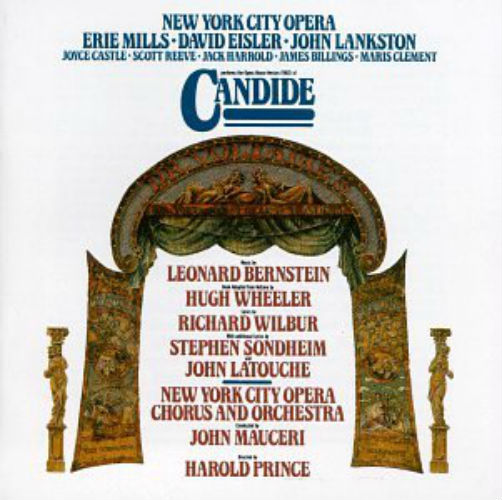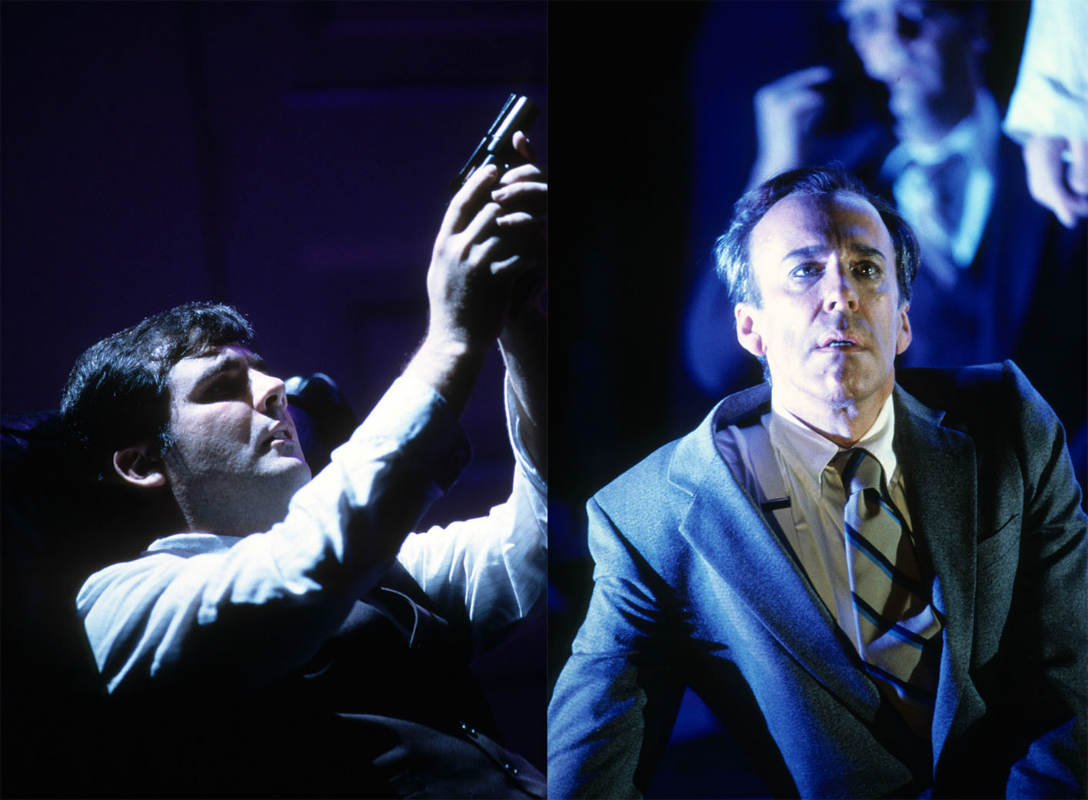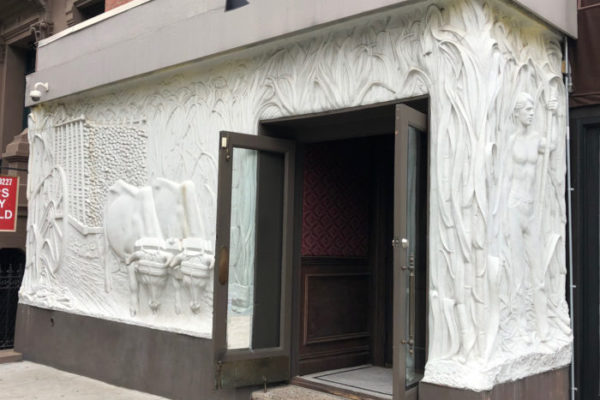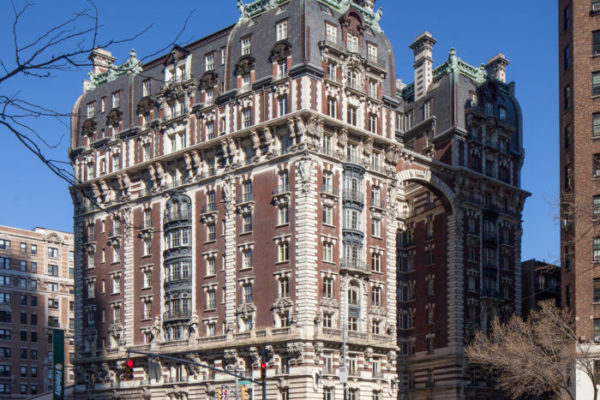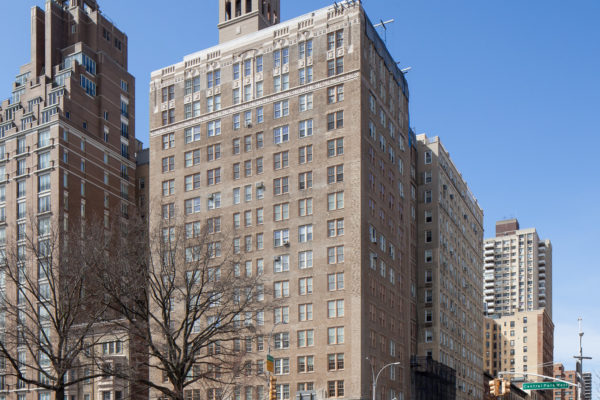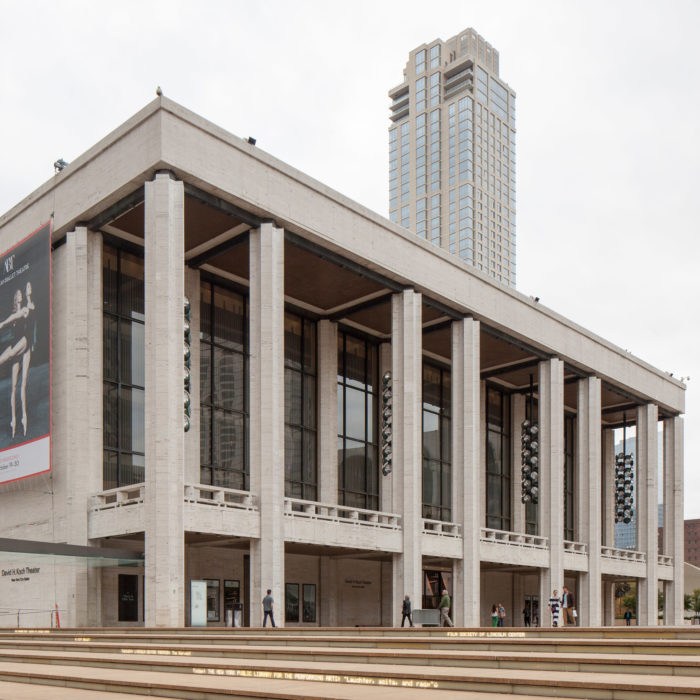
Lincoln Center: New York State Theater
overview
Lincoln Center, a world-class performing arts center, has had close connections to the LGBT community since planning began in the mid-1950s.
The New York State Theater (now the David H. Koch Theater), constructed in 1964 to the designs of architect Philip Johnson, has been associated with several other major LGBT artists, including arts impresario Lincoln Kirstein, choreographers Jerome Robbins and Christopher Wheeldon, artist Jasper Johns, and composers Benjamin Britten, Leonard Bernstein, and Virgil Thomson.
On the Map
VIEW The Full MapHistory
Planning for Lincoln Center, one of the world’s major cultural centers, began in the mid-1950s. Ground was broken in 1959 and within a decade six theaters, a school, a library and museum, a fountain, and landscaped parks, all with Modern works of art, had been completed. The complex includes, among others, three main buildings that surround the plaza and fountain: the Metropolitan Opera House, the New York State Theater (now the David H. Koch Theater), and Philharmonic Hall (later Avery Fisher Hall and now David Geffen Hall). These buildings and the Vivian Beaumont Theater, the New York Public Library for the Performing Arts, and the Juilliard School were designed by leading American architects and all are faced in Italian travertine. Damrosch Park is located at the southwest corner.
Philip Johnson was one of the major figures involved with the design of Lincoln Center, completing the New York State Theater (now the David H. Koch Theater) in 1964 as the home of the New York City Ballet. Johnson also designed the original fountain in the plaza (destroyed). The east lobby of the State Theater contains a monumental work, “Numbers, 1964,” by Jasper Johns, made from Sculpmetal. Composed of separate panels bolted together, this is the largest of Johns’ Numbers series and is his only public work of art. The size of each panel was determined by the foot size of his friend, choreographer Merce Cunningham, whose footprint can be seen towards the upper right.
State Theater was designed specifically for New York City Ballet (NYCB), the company co-founded by Lincoln Kirstein and George Balanchine. Kirstein was determined to see ballet become a major art form in the United States. He brought Balanchine to America in 1933 to establish the School of American Ballet and a related company. In 1946, he founded a company called Ballet Society with Balanchine, which became NYCB two years later. In her biography of Balanchine, Jennifer Homans notes that he tended to surround himself with gay men, including pianist Gordon Boelzner (Homans says “Balanchine, who depended on no one, depended on Gordon”) and conductor Robert Irving. Most significantly, when Jerome Robbins decided to return to the ballet world in 1969, after choreographing and directing many Broadway musicals, Balanchine welcomed him, first as ballet master and later as co-director, creating such seminal ballets as Dances at a Gathering (1969) and The Goldberg Variations (1971). On October 5, 1987, he served as the artistic coordinator for “Dancing for Life,” a historic AIDS benefit gala that included performances by the companies of such gay choreographers as Alvin Ailey, Merce Cunningham, Eliot Feld, Robert Joffrey, Lar Lubovitch, Mark Morris, and Paul Taylor.
In 1997, British-born City Ballet soloist Christopher Wheeldon choreographed his first ballet for the company. In 2001 he became the company’s first resident choreographer and one of the world’s most sought after choreographers.
New York City Opera relocated from City Center, where it had performed from 1944 to 1966, to the New York State Theater at Lincoln Center, where it remained until 2010. As at City Center, the company featured the operas of a number of significant 20th century gay composers. Among them were Albert Herring (1971) and Paul Bunyan (1998) by Benjamin Britten; Summer and Smoke (1972) by Lee Hoiby; “Opera House Version” of Candide (1982) by Leonard Bernstein; Emmeline (1998) by Tobias Picker; The Mother of Us All (2000) by Virgil Thomson; Dead Man Walking (2002) by Jake Heggie; and Vanessa (2007) by Samuel Barber. Harvey Milk (1995), an opera by Stewart Wallace about San Francisco’s first gay elected official, Harvey Milk, had, according to the New York Times, probably “the first homosexual love scenes in an opera house.”
A number of gay men were instrumental in leading City Opera in the late 20th century. Christopher Keene, a protégé of Gian Carlo Menotti, was the company’s Music Director (1982-86) and General Manager (1989-95); he died of AIDS in 1995. He was followed by Paul Kellogg as General and Artistic Director (1996-2007). Mark Adamo was named Composer in Residence (2001-2006), and the company performed his two operas, Little Women (2003) and Lysistrata (2006).
When the time finally arrived that opera performers could be more open about their sexuality, gay and lesbian singers associated with City Opera were in the forefront. These included Christine Brandes, Beth Clayton, Anthony Roth Costanzo, Bejun Mehta, Kurt Ollmann, Patricia Racette, Sanford Sylvan, and David Walker.
Entry by Andrew S. Dolkart and Jay Shockley, project directors (March 2017; last revised May 2018).
NOTE: Names above in bold indicate LGBT people.
Building Information
- Architect or Builder: Philip Johnson
- Year Built: 1964
Sources
Frank DiGiacomo, “Art in the Gilded Age: Lincoln Center Czars Hang Up Jasper Johns,” New York Observer, January 18, 1999.
Jack Anderson, “Lincoln Kirstein, City Ballet Co-Founder, Dies,” The New York Times, January 6, 1996, p. 1.
Jennifer Homans, Mr. B: George Balanchine’s 20th Century (New York: Random House, 2022). [source of Homans quote, p. 430]
“Lincoln Continental,” Out (June 1996), pp. 123-24, 160-61.
Various articles, The New York Times (to confirm opening dates of operas).
Do you have more information about this site?
This project is enriched by your participation! Do you have your own images of this site? Or a story to share? Would you like to suggest a different historic site?
